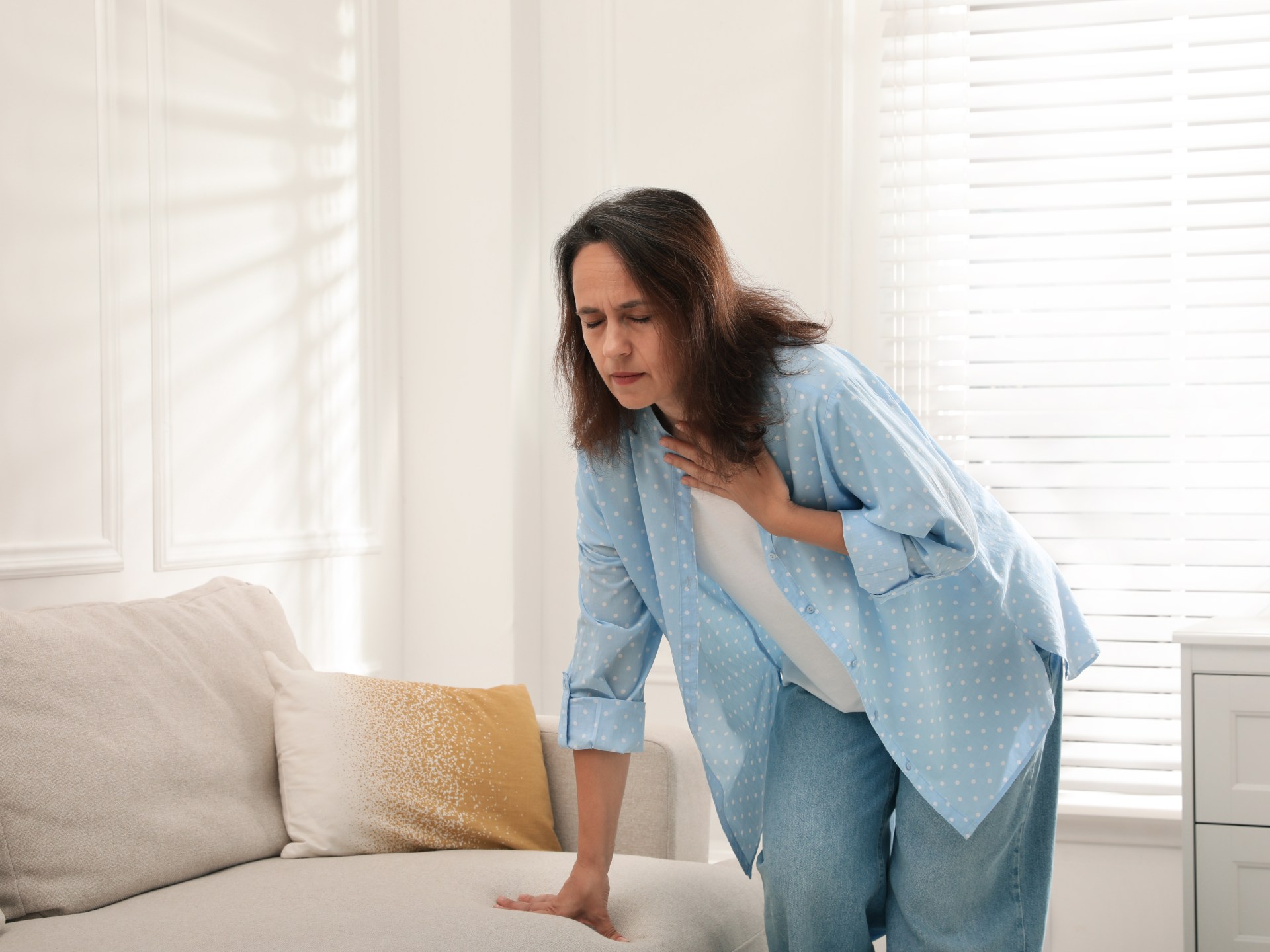Feelings of anxiety, sadness, and severe depression are the body's normal response to shock, but these feelings can also be accompanied by strong physical effects, such as rapid breathing, an increased heart rate, nausea or abdominal pain.
But how does the human brain perceive these physical changes?
Especially with regard to breathing, why is the body affected by sadness by reducing our ability to take deep and calm breaths?
Emotions and their direct impact on the body
Despite being one of the frightening and painful symptoms, it is perfectly normal to feel tightness in the chest and difficulty breathing when suffering from severe sadness, strong anxiety and stress, according to Medical News Today.
However, many are concerned that the symptoms affecting their breathing are related to a physical problem.
In fact, mental and emotional health affects physical health in several direct ways.
The person may feel chest tightness and shortness of breath because the body is trying to get more oxygen to the muscles (Shutterstock)
Physical symptoms of anxiety and depression
Anxiety is the natural fear response of the human body.
This is known as the "fight or flight" response.
The body usually reacts in physical and mental ways to prepare the person either to fight and defend itself against an external cause or factor, or to escape a dangerous situation.
As a result, shortness of breath is one of those bodily responses to strong emotions.
A person may feel that he cannot catch his breath, or a tightness in his chest, or as if he is suffocating and needs more air.
Studies have shown a strong relationship between anxiety, intense sadness, strong emotions, and respiratory symptoms, including shortness of breath.
Other symptoms that can occur during this response include:
Rapid breathing (hyperventilation).
sadness.
Shortness of breath or a feeling of suffocation.
Feeling like you have a lump in your throat.
cramp.
Heart palpitations (as if the heart is beating faster and stronger).
Feeling faint, dizzy or unsteady.
Nausea or a feeling of pain in the stomach.
Restlessness, irritability, or malaise.
In general, emotions are closely related to the body's physiological state, including heart rate, blood pressure, and how and how deeply you breathe.
Physiological changes are largely driven by the autonomic nervous system, which regulates involuntary bodily functions.
"Physiological changes, and the psychological experience of different emotions, have adapted to help us respond to our environment with behaviors that promote successful survival," American physician Jennifer Hetema explains to Psych Central.
When feeling sad, the body, in turn, will be affected by the intensity of the feeling until consciousness intervenes to control the situation (Shutterstock)
The relationship of anxiety with breathing and chest tightness
As a result of the entry of a person affected by strong feelings, whether fear, anxiety or intense sadness, into the aforementioned fight or flight situation, the body expects that the person will want to make an effort to preserve his life, either by running or by accumulating huge muscle strength to defend himself physically.
It is true that suffering from negative emotions such as depression may not make a person run for life.
However, the body sets the same response as if it were faced with a life-threatening monster.
Thus, the person may feel tightness in the chest, inability to breathe, rapid breathing and blood pressure because the body is trying to get more oxygen to the muscles, which prepares the person to run or fight.
The heart rate may increase and the person will feel hot, while more blood is being pumped to the muscles, preparing the person for combat.
All of these symptoms are natural responses of the body designed to save a person's life from an imminent danger, even if this danger is primarily mental and psychological, such as feeling severe stress or depression.
Lying on a flat surface, such as a bed, with the head supported relieves shortness of breath (pixels)
How can breaths be used to calm negative feelings?
Suffering from difficult feelings is completely human, as it is human nature to feel different feelings, and when he feels sad, angry or frustrated, the body, in turn, will be affected by the intensity of the feeling until awareness intervenes to control the situation.
The first step in dealing with overwhelming negative emotions is to allow the feeling and emotions to take their time, then consciously adjust the frequency of the breath and the tension in the body.
For immediate relief of shortness of breath caused by anxiety, sadness or fear, some may try the diaphragmatic breathing technique, by taking deep breaths through the nose, and waiting a few seconds, before exhaling through the mouth.
This technique works to provide some balance by reducing the diaphragm, expanding the abdomen, deepening the inhale and exhaling and harmonizing it in the natural way that it is when relaxing, the condition is created until the body actually summons it.
Steps to recover from shortness of breath due to negative feelings
The Health Line website recommends health and medical information, with specific steps that will alleviate the feeling of shortness of breath associated with negative feelings, as follows:
Sit comfortably in a chair or lie on a flat surface, such as a bed, with the head supported.
Place one hand on the upper chest and the other under the rib cage.
Breathe slowly through the nose until the stomach moves out.
Relax and allow the abdomen to contract inward as you exhale.
Continue to take deep breaths and exhale, feeling the stomach rise and fall for 5 to 10 minutes, or until you feel better.
It is necessary to know that the reaction is completely natural and disappears with the passage of the stimulus or the external factor that caused it in the first place.
If symptoms persist, it may be important to see a psychiatrist, who may diagnose the patient with depression or panic, which calls for sedative drugs.

